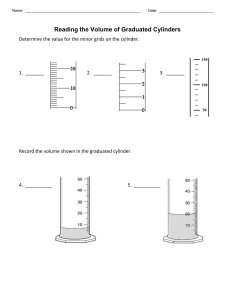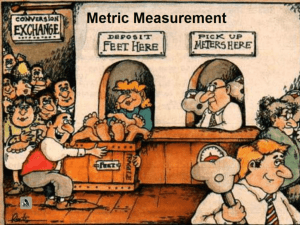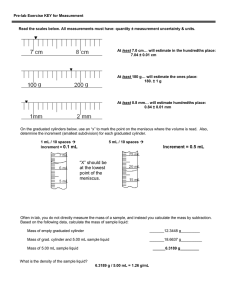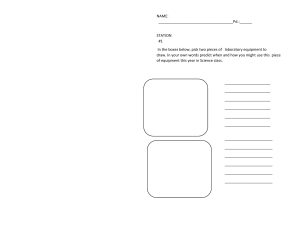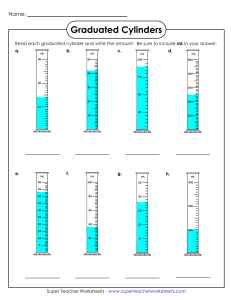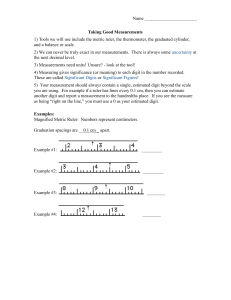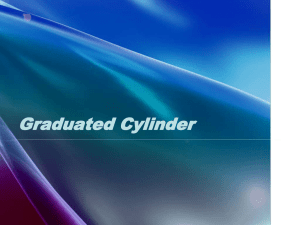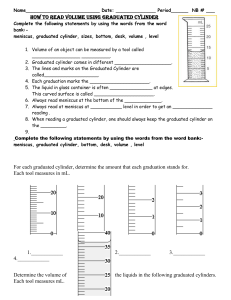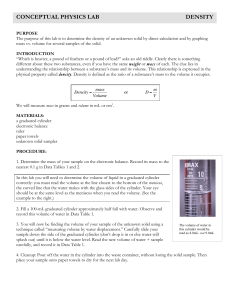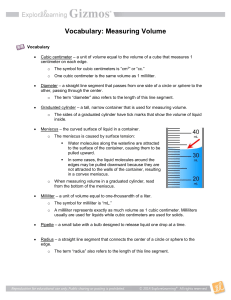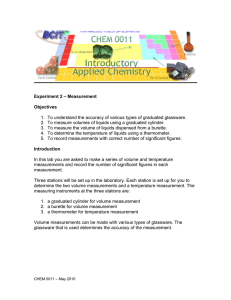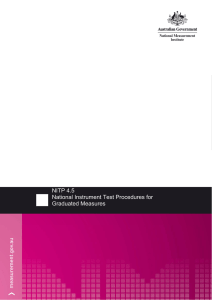Scientific Measurements .
advertisement
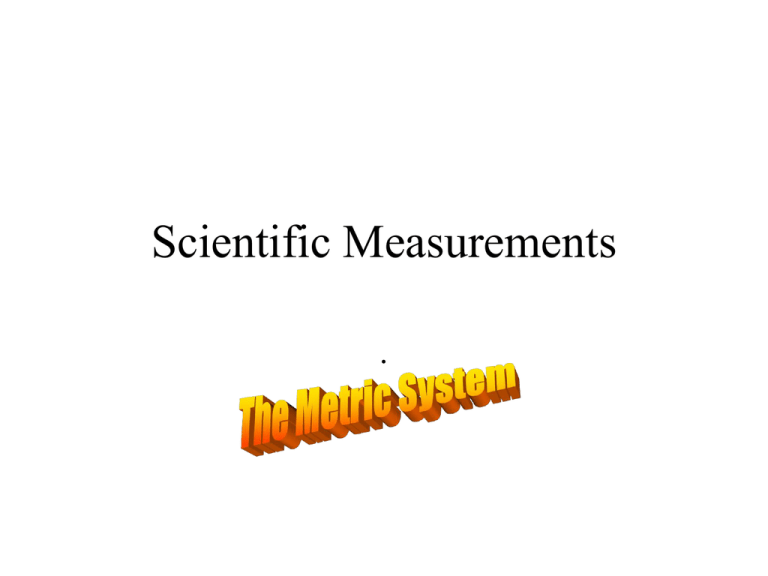
Scientific Measurements . US Customary Units vs. The Metric System • In the United States our units of measurement is based on the old English units. • For science it is much simpler to use the French devised units because it is base on increments of 10l A_Brief_History_of_Measurement . • To measure how long or how far an object is • Volume is the amount of space that something occupies. • The SI unit for volume is cubic centimeter or liter • A graduated cylinder is used to measure volume. Volume of a solid • To measure the volume of a regular solid, measure the length x width x height. • Your answer will be in cubic centimeters or cm3. • Remember in science we always use the metric system. • To measure length –use meters. Rectangular Prisms • . How to use a Graduated Cylinder • In a graduated cylinder, the liquid surface curves downward to form a meniscus. • To measure accurately, read the scale at eye level at the lowest part of the meniscus. Measuring_Volume . • Mass is the amount of matter that an object contains. • An object’s mass always stays the same no matter where the measurement is taken. • Mass and weight are not the same. Measuring_Mass . • There are three different scales used to measure temperature. • Fahrenheit scale – water freezes at 320 and boils at 2120F • Celsius (centigrade) scale- water freezes at 00C and boils at 1000C • Kelvin scale – there are no negative numbers in the Kelvin scale. 00K is the lowest possible temperature. Measuring_Temperature
